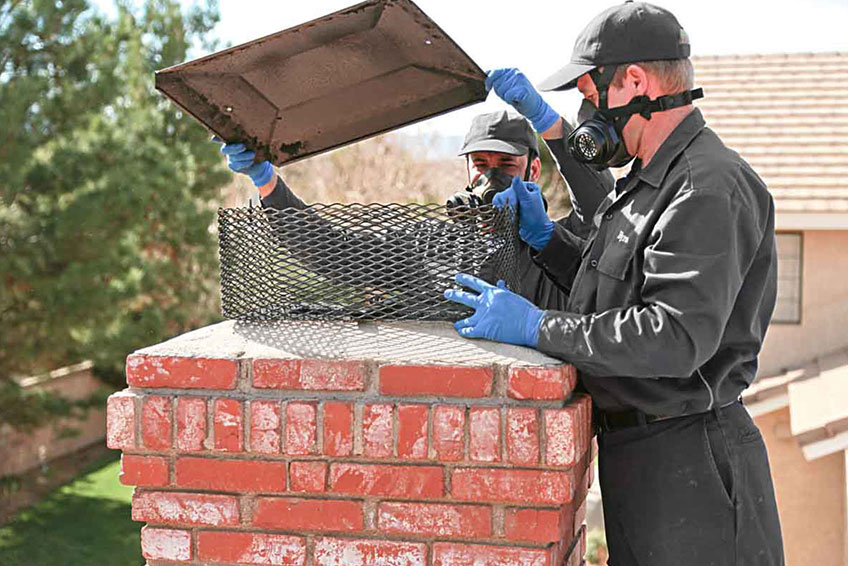Your chimney might not be something you think about every day, but if you own a home in Aurora, it plays a major role in keeping you safe and warm. A clean, well-maintained chimney keeps smoke moving out of your home, prevents dangerous fires, and makes your fireplace run more efficiently. But like any part of your home, it needs regular care — and that’s where a professional chimney inspection comes in.
In this guide, we’ll walk you through what to expect during an inspection, why it’s so important, and how to make sure your chimney is ready for the cold Aurora winters.
Why a Chimney Inspection in Aurora Matters More Than You Think
A chimney inspection isn’t just about making sure your fireplace looks nice. It’s about safety. Each year, house fires in the U.S. are caused by creosote buildup, cracked flue liners, or other chimney damage that went unnoticed.
Here in Aurora, where winter temperatures can dip well below freezing, chimneys work overtime. That means problems can develop faster than you might expect. Annual inspections ensure that your chimney is free from blockages, structural damage, or hidden hazards.
Key benefits of a professional chimney inspection in Aurora:
Fire prevention: Detect creosote buildup before it becomes a hazard.
Carbon monoxide safety: Identify ventilation issues that could cause dangerous gas leaks.
Home value protection: Maintain your fireplace as a selling point for your home.
Energy efficiency: Ensure your chimney is working with your heating system, not against it.
How to Prepare for a Chimney Inspection in Aurora
The best time to schedule your inspection is before the heating season kicks in — ideally in early fall. This gives you time to address any repairs before you need your fireplace daily.
Here’s what you can do before your chimney inspector arrives:
Clear the fireplace area – Move furniture, rugs, and decorations at least three feet away from the hearth.
Avoid using your fireplace for 24 hours – This ensures the chimney and fireplace are cool for safe inspection.
Take note of any issues – If you’ve noticed smoke backing up into your room, strange odors, or crumbling mortar, share these details with your inspector.
Pro Tip: Pair your inspection with a chimney sweep if you haven’t had one in the last year. That way, your chimney is both clean and certified safe. (For more on this, check out our related blog: Aurora Homeowners: 5 Signs You Desperately Need a Chimney Sweep.)
The Three Levels of Chimney Inspection
Not all chimney inspections are created equal. The National Fire Protection Association (NFPA) outlines three levels, and your chimney’s condition will determine which you need.
Level 1 – The Annual Checkup
This is your standard inspection if you’ve been using your chimney regularly without changes. The inspector will look at all accessible parts of your chimney inside and out, checking for obstructions, buildup, or basic wear and tear.
Level 2 – When You’re Making Changes
If you’ve made modifications to your heating system, changed fuel types, or bought/sold a home, a Level 2 inspection is in order. This includes everything in Level 1 plus video scanning of the flue to spot hidden issues.
Level 3 – Full Investigation
This is the most in-depth inspection, often required after a chimney fire, severe weather damage, or suspected structural failure. It may involve removing parts of the chimney or surrounding structure to access problem areas.
Common Chimney Problems Aurora Inspectors Find
During inspections in Aurora homes, chimney professionals often encounter the same issues over and over:
Creosote buildup: A highly flammable byproduct of burning wood.
Cracked or missing mortar: Can let moisture in, leading to further damage.
Chimney cap damage: Without it, animals, debris, and water can get in.
Flue liner cracks: Dangerous because they can allow heat or gases to escape into your home.
Blockages: Bird nests, leaves, or even fallen bricks can restrict airflow.
Most of these issues are easy to fix if caught early — another reason regular inspections are worth it.
When to Call for a Chimney Inspection in Aurora Immediately
While an annual inspection is recommended, certain warning signs mean you shouldn’t wait until your yearly appointment. Call a professional right away if you notice:
Smoke spilling into the room
Strong, unpleasant odors even when the fireplace isn’t in use
Pieces of brick, tile, or mortar falling into your fireplace
White staining (efflorescence) on the outside of your chimney
Draft problems that weren’t there before
These symptoms can point to structural damage, ventilation issues, or a serious creosote problem.
Choosing the Right Chimney Inspector in Aurora
Not all chimney services are created equal. Here’s what to look for when hiring an inspector:
Certification: Look for companies certified by the Chimney Safety Institute of America (CSIA).
Local experience: Aurora winters are tough; choose someone who understands local weather-related damage.
Reputation: Check reviews and ask for references.
Transparency: A good inspector will explain their findings and give you clear options for repairs.
Keep Your Aurora Home Safe Year-Round
A professional chimney inspection in Aurora isn’t just a checkbox on your home maintenance list — it’s a safety essential. By scheduling annual inspections, addressing problems quickly, and working with a qualified local professional, you’ll keep your home warm, safe, and efficient for years to come.
Ready to book your next chimney inspection? Call our Aurora chimney experts today and enjoy peace of mind before the next cold front hits.

